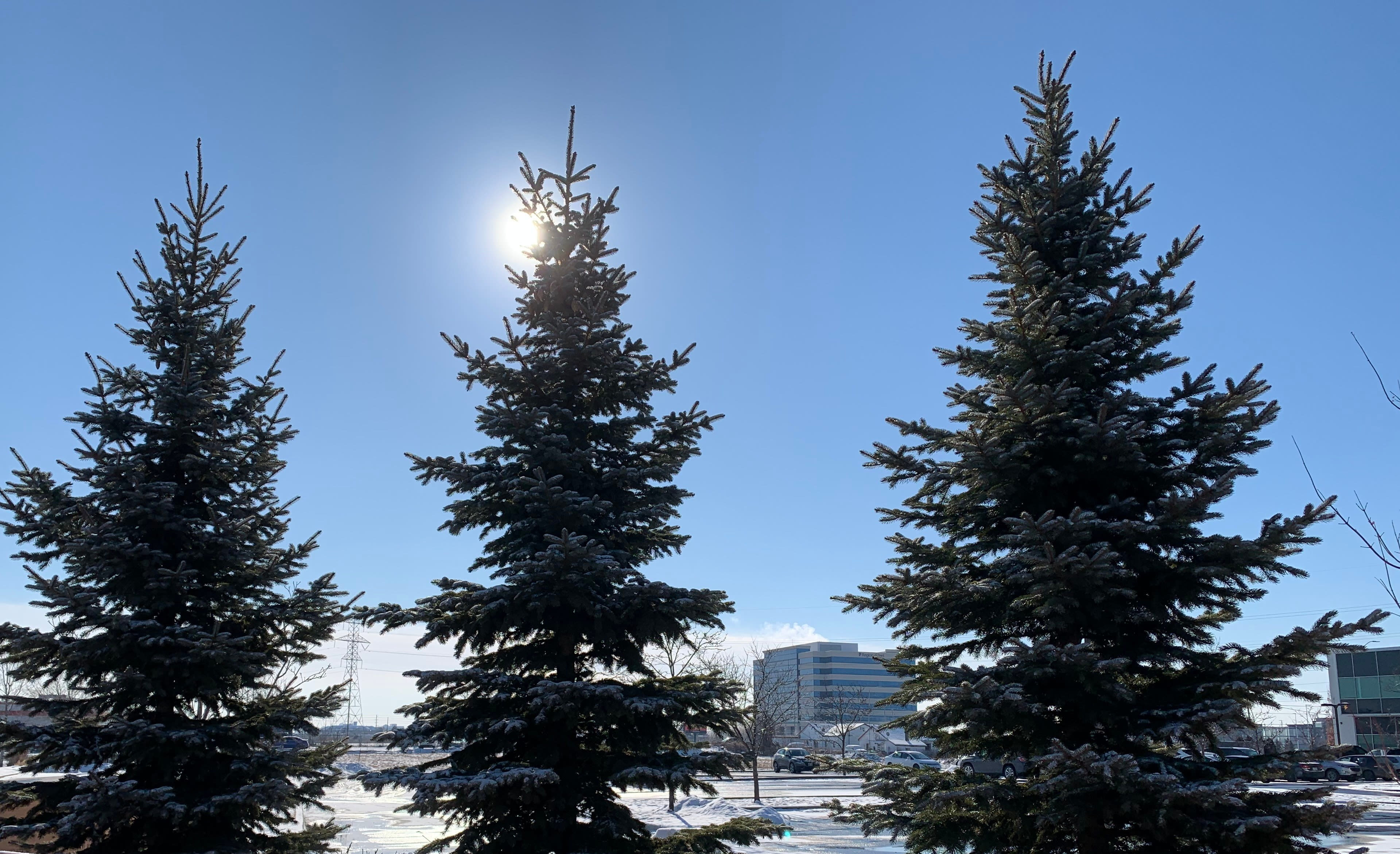Minimizing enviro impacts for Hurontario LRT project
Metrolinx is protecting trees during construction with City partners & local conservation authority.
Mar 2, 2021
Constructing a major new transit route, means constantly working with the environment, including with trees along the way.
This is true for crews along the Hurontario Light Rail Transit (HuLRT) route, where they’re making decisions built on conservation, safety and setting the stage for a reliable rapid transit system that will link Mississauga and Brampton.
Work is underway to manage and protect the environment as the HuLRT is being built. These particular trees? There’s been special fencing built around, to preserve them. (Metrolinx photo)
Experts working on the HuLRT route have been working to prepare areas impacted by construction activities, which includes protecting, trimming, and removing trees or shrubs along the corridor. This work is necessary to make room for the LRT infrastructure, including the new track system and stations.
Following municipal guidelines, for every tree removed, a new one will be replanted as improvements are made to the surrounding natural landscape. A full environmental report can be found on the HuLRT project page.
Mississauga South will be the first area along the alignment that will start to see changes to the streetscape, including:
- Improved landscape design and the addition of trees, and shrubs to the surrounding natural environment
- New sidewalks and bike lanes in many areas of the corridor to help promote active modes of transportation
- Improvements to Port Credit GO Station to add to regional connectivity
- Upgrades to the existing utilities along the corridor, ensuring reliable civil infrastructure for residents and businesses.
- Widened roadway to retain existing number of traffic lanes during operation of the LRT
During construction, the goal is to minimize impacts to trees wherever possible. Crews will work to ensure the protection of trees that will be preserved adjacent to the construction work, ensuring the health of the tree is not compromised and is safe from possible damage.
An example of some of that protective fencing now in place. (Metrolinx photo)
Prior to removal, trees are inspected by a biologist to ensure any nesting birds or existing habitats will not be disturbed. A full arborist report must be conducted, with input from the City of Mississauga, to understand the number and types of trees to be removed and replaced.
Preserving the environment and decreasing the projects carbon footprint is an important piece to the entire construction process.
For more information about tree removals and the Tree Protection Plan for the HuLRT, make sure to follow the project at @hurontarioLRT or sign up for newsletter updates.
by Erika D’Urbano Communications senior advisor
